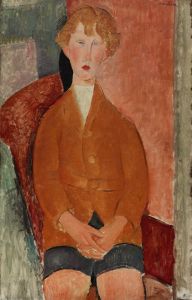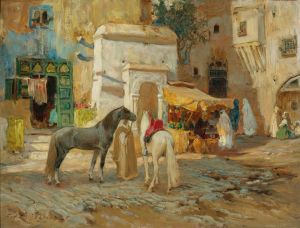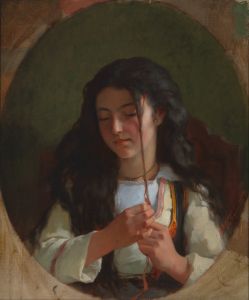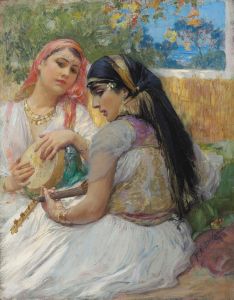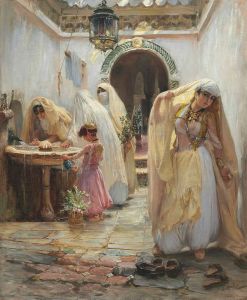
The Young Scribe
A hand-painted replica of Frederick Arthur Bridgman’s masterpiece The Young Scribe, meticulously crafted by professional artists to capture the true essence of the original. Each piece is created with museum-quality canvas and rare mineral pigments, carefully painted by experienced artists with delicate brushstrokes and rich, layered colors to perfectly recreate the texture of the original artwork. Unlike machine-printed reproductions, this hand-painted version brings the painting to life, infused with the artist’s emotions and skill in every stroke. Whether for personal collection or home decoration, it instantly elevates the artistic atmosphere of any space.
Frederick Arthur Bridgman was an American artist known for his detailed and evocative Orientalist paintings. Born in 1847 in Tuskegee, Alabama, Bridgman became one of the most celebrated American artists of his time, particularly recognized for his depictions of North African and Middle Eastern scenes. His painting "The Young Scribe" is a notable example of his work, capturing the essence of Orientalist themes that fascinated Western audiences in the 19th century.
"The Young Scribe" portrays a young boy engaged in the act of writing, a subject that reflects Bridgman's interest in the daily life and culture of the regions he visited. Bridgman traveled extensively in North Africa and the Middle East, and his experiences there deeply influenced his artistic output. His works often depict scenes of everyday life, infused with a sense of romanticism and exoticism that was characteristic of Orientalist art.
In "The Young Scribe," Bridgman demonstrates his skill in rendering intricate details and textures. The painting likely features the young scribe seated in a traditional setting, surrounded by elements that suggest a scholarly or educational environment. Bridgman's attention to detail is evident in the depiction of the scribe's attire, the writing materials, and the surrounding architecture or furnishings, which are often meticulously painted to convey a sense of authenticity and atmosphere.
Bridgman's use of light and color in "The Young Scribe" is also noteworthy. He often employed a warm palette and soft lighting to create a serene and contemplative mood. This approach not only highlights the subject but also enhances the overall aesthetic appeal of the painting, drawing viewers into the scene and inviting them to imagine the broader context of the young scribe's world.
As with many Orientalist works, Bridgman's paintings, including "The Young Scribe," reflect the Western fascination with the "exotic" East during the 19th century. This genre of art often romanticized and idealized its subjects, sometimes at the expense of accuracy or cultural sensitivity. However, Bridgman's work is also appreciated for its artistic merit and the skillful way he captured the beauty and complexity of the cultures he portrayed.
Frederick Arthur Bridgman's contributions to Orientalist art have been recognized and celebrated in various exhibitions and collections. His works, including "The Young Scribe," continue to be studied and appreciated for their artistic qualities and their role in the broader context of 19th-century art. Bridgman's legacy as an artist who bridged American and European art traditions, while exploring themes of cultural exchange and representation, remains significant in the history of art.





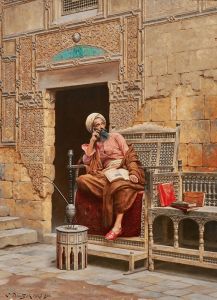
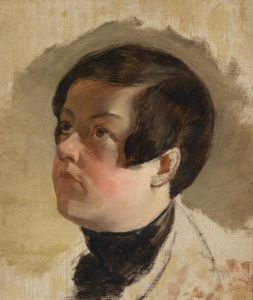
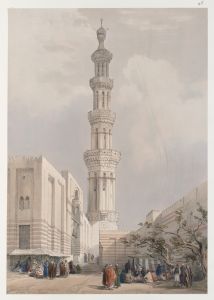
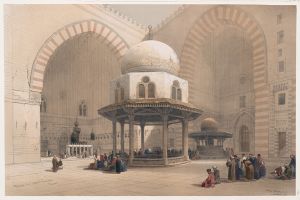
![Group of Nubians, Wady Kardasey [sic] [Qirtâsî].](/imgs/217579/s/david-roberts-group-of-nubians-wady-kardasey-sic-qirtasi-c64109d2.jpg)
